QCF: Skylanders Imaginators
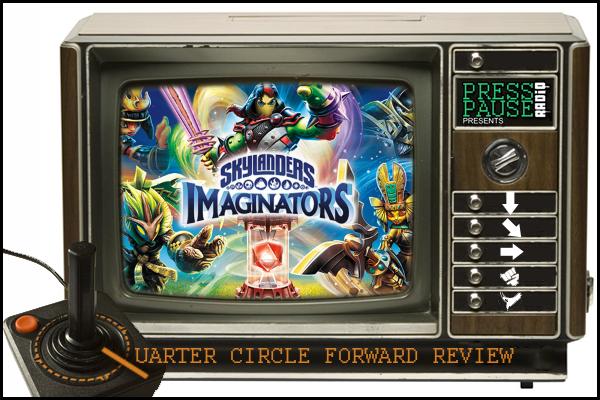
 t some point, I think we all knew that this “Toys to life craze” was going to hit its peak much like the way Guitar Hero did around the sixth of seventh iteration—as much as we all want to deny it, we knew.
t some point, I think we all knew that this “Toys to life craze” was going to hit its peak much like the way Guitar Hero did around the sixth of seventh iteration—as much as we all want to deny it, we knew.
Skylanders Imaginators is a testament to that; a sequel that that promises an ambitious premise, and fails to deliver on anything more than just another Skylanders game, and that’s when the game doesn’t return to some gross old habits the series worked hard to break either.
If there was one thing that the Skylander series always did so well, it was carrying out the main hook it was driving at with solid execution, and all of the gimmicks thus far have been something that any of our childhood selves could latch onto. This standard is what makes the premise of Skylanders so great, because it made you feel like a kid again.
The emphasis on that last sentence is DID though, and it’s a real shame too, because there was a lot of potential for Imaginators to proper follow up that Superchargers was supposed to be for Trap Team; instead the gimmick is more a lazy cash grab than a fun feature.
The process behind Frankensteining your own toy heroes is surprisingly robust in terms of the palette of parts and pieces that you have, with the execution of those options feeling more limited than anything else involved.
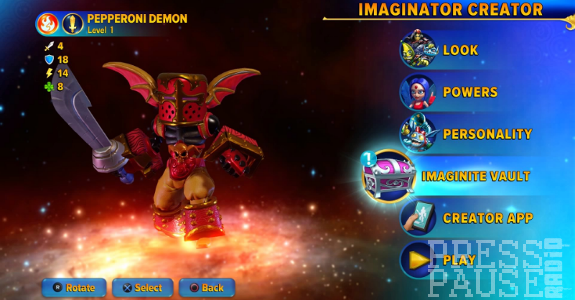
Customization lets you mess with details like eye colors, and heights, right down to the pitch of voice and inane catchphrase, but it won’t grant you access to some of the more conventional options we’ve seen out of an editor tool before like scaling the size of specific features to the face and appendages of animated crusaders. The only physical categories to tweak out your custom Skylander is the head, torso, arms, and legs, with the sub-customization only extending to swapping color palettes around with some basic hexadecimal scrobbler. Collecting the various parts and pieces are also a bit of a grind for anyone invested into the idea, but Activision and Toys for Bob is quick to remind everyone that it doesn’t have to be by shamelessly shilling the fact that players can buy these new parts too.
Skylander has never shied away from gouging your wallet before, but never before has the game from the lineup featured micro-transactions, and the execution of it is…kind of sloppy. Players will have the opportunity to either buy the in-game chests that hold any number of parts that vary in rarity. The payout for the goods are similar to a booster that you get from a Trading Card Game, only the game does you the one courtesy of ranking the class of chest, and likelihood of rarity expected out of the loot (not without a price markup though.) Weirdly enough, you can also purchase physical toy version of the chests in stores as well, and they function the same way for the same price as their digital counterparts. This part of the concept sounds neat at first, until you come to realize that the toy chest is now a worthless paperweight that can’t be used again, unless you ever decide to scrub your game data and play a fresh new adventure that is—it’s just more wasteful than it is cool.
While there isn’t a lot of depth to tooling your Imaginator’s appearance, there’s fortunately more to mess around with in their fighting style with the introduction of battle classes. The available combat ranks are Knight, Ninja. Sorcerer, Brawler, Sentinel, Bazooker, Quickshot, Smasher, Bowslinger, and Swashbuckler, ten in total, and a lot of them are just plain redundant. The Knight class is a variation of the Swashbuckler, the BowSlinger is just a variation of Quickshot, and Smasher being a variation of Brawler, some of these distinctions aren’t significant enough to exist, and are most semantical, simply existing to artificially fluff out the depth to its customization system.
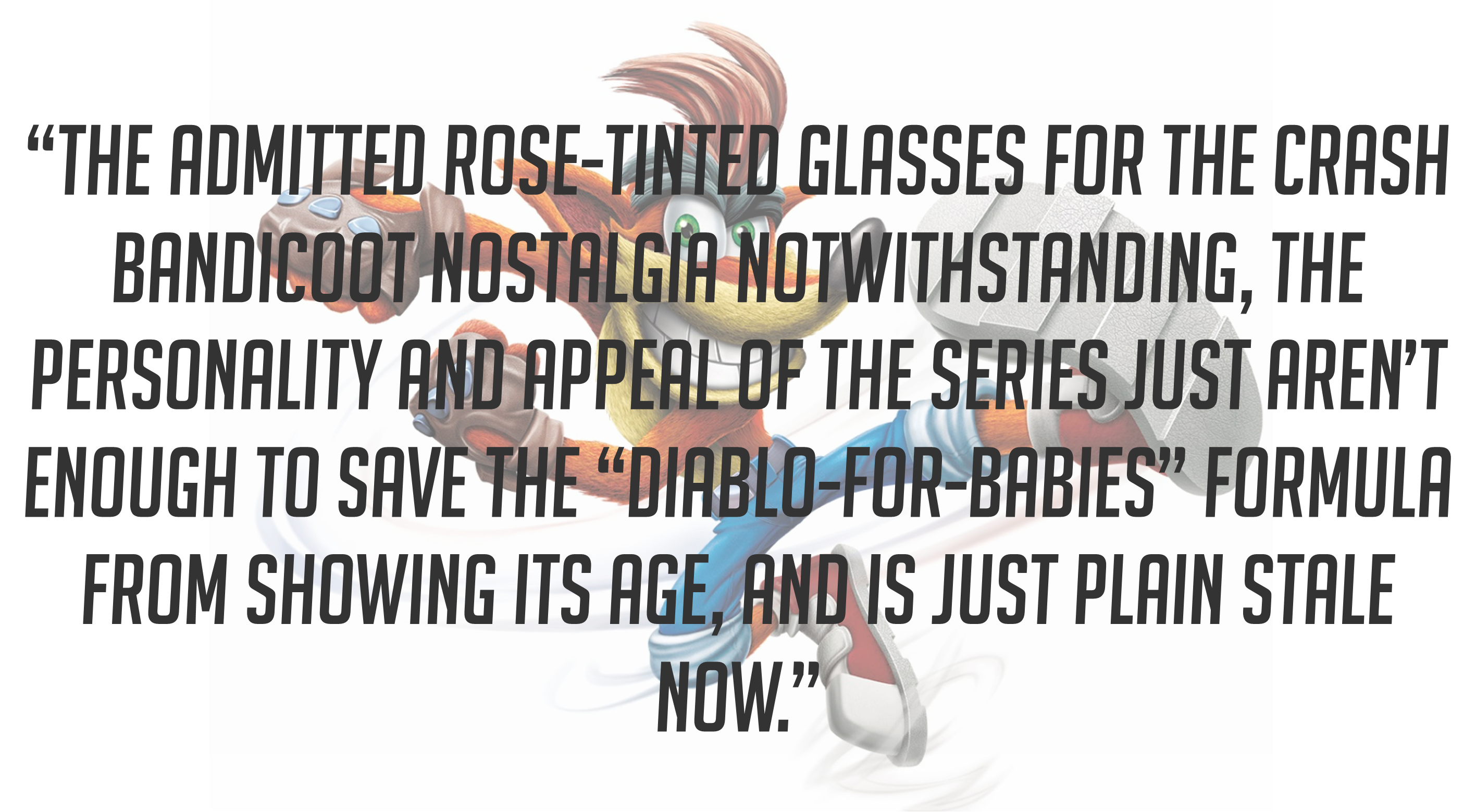
The classes spill over to the Sensei Skylanders as well, the respective new wave of themed Skylanders that accompany the sequel, and that where the series returns some more of its grosser roots in terms of commercialism. Gating content behind the use of the elemental types is nothing new, that wheelhouse is expanded with the classes acting as another lock to content within stages, which was something that’s been explored before in Swapforce, but in contrast to then versus now, it’s less diabolical in comparison—because the way it was done in Swapforce wasn’t so shallow.
The other benefit to nabbing more sensei figures from the store is unlocking latent abilities for the Imaginators depending on their class, adding incentive for those who want to flesh out all the available potential that they can out of their unique critter, but the reward doesn’t really justify that kind of expense as well either.
Aside from the main campaign and Co-Op modes offered, there’s a racing mode available to those who held onto their Supercharger toys and vehicles; a lot of the tracks are copy and pasted though, along with no improvements to the same flaws that plagued the driving physics back then either. Another minor or major gripe (depending on how you look at it) is the complete omission of Trap Team crystal compatibility, so for any of those players who held on to those things might as well let them continue to collect dust on the shelves, because they’re just totally worthless this time around.
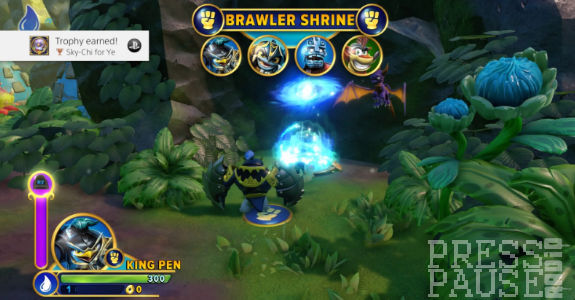
Imaginators get the essentials out of the way with its character creation tool, but it ironically doesn’t offer any individual imagination to players who want to personalize their own heroes to a detail that will actually make it wholly unique from anyone else’s. I’d even say it’s likely to encounter another Imaginator online that’s similar to your build if you played long enough, which is a bit disheartening considering that this is the one mechanic that sets this iteration of the franchise apart from the rest of them.
The admitted rose-tinted glasses for the Crash Bandicoot nostalgia notwithstanding, the personality and appeal of the series just aren’t enough to save the “Diablo-for-babies” formula from showing its age, and is just plain stale now.
If you’re a fan of the Toys-to-Life brand that pioneered the phenomenon then I suggest you come into the latest entry with baited breath, otherwise I’d recommend to skip over this one altogether and play some more Trap Team—a title where the series arguably peaked at.
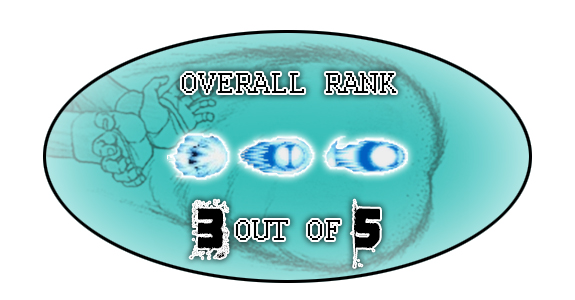
 Activision,
Activision,  Crash Bandicoot,
Crash Bandicoot,  PS4,
PS4,  Skylanders,
Skylanders,  Skylanders Imaginators,
Skylanders Imaginators,  Toys For Bob,
Toys For Bob,  Toys-to-Life | in
Toys-to-Life | in  QCF Reviews
QCF Reviews 









